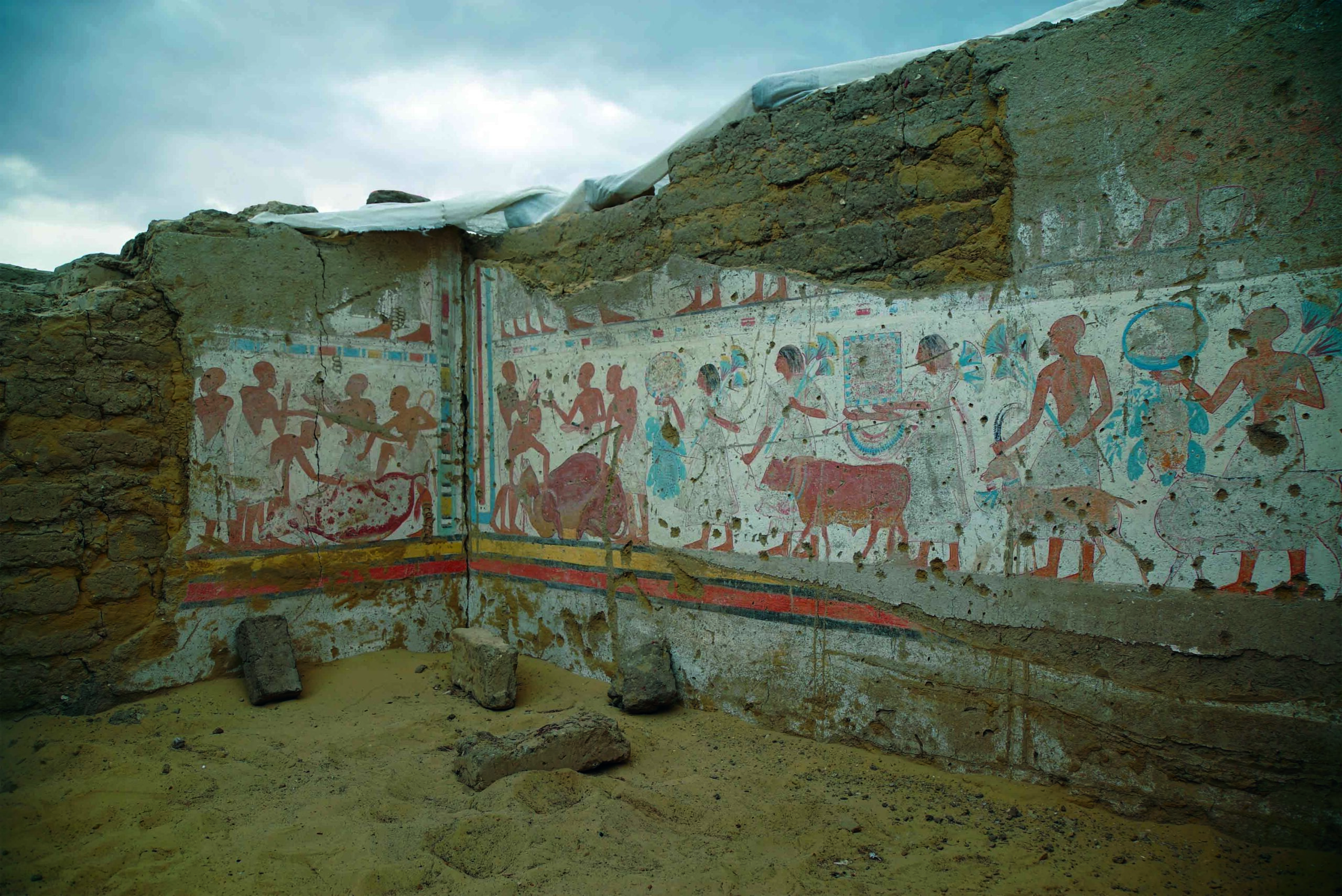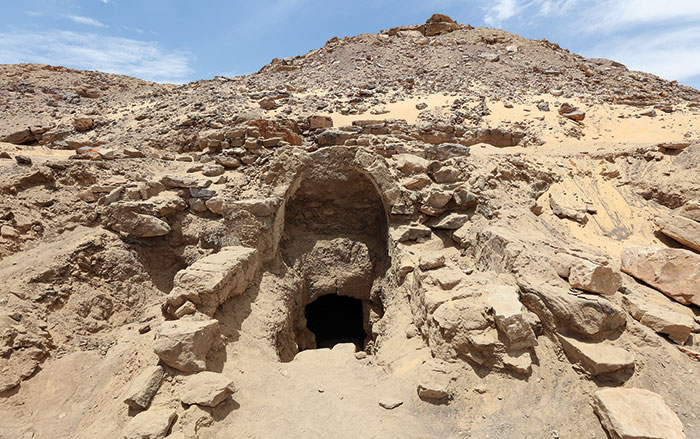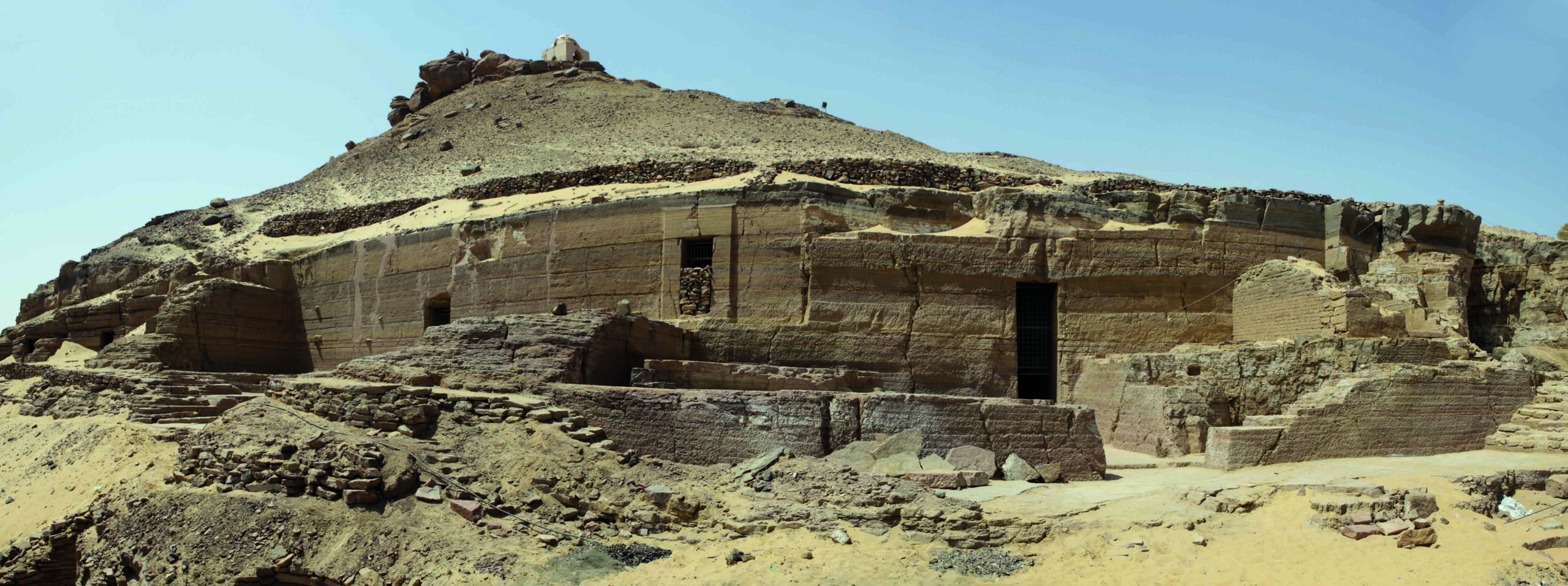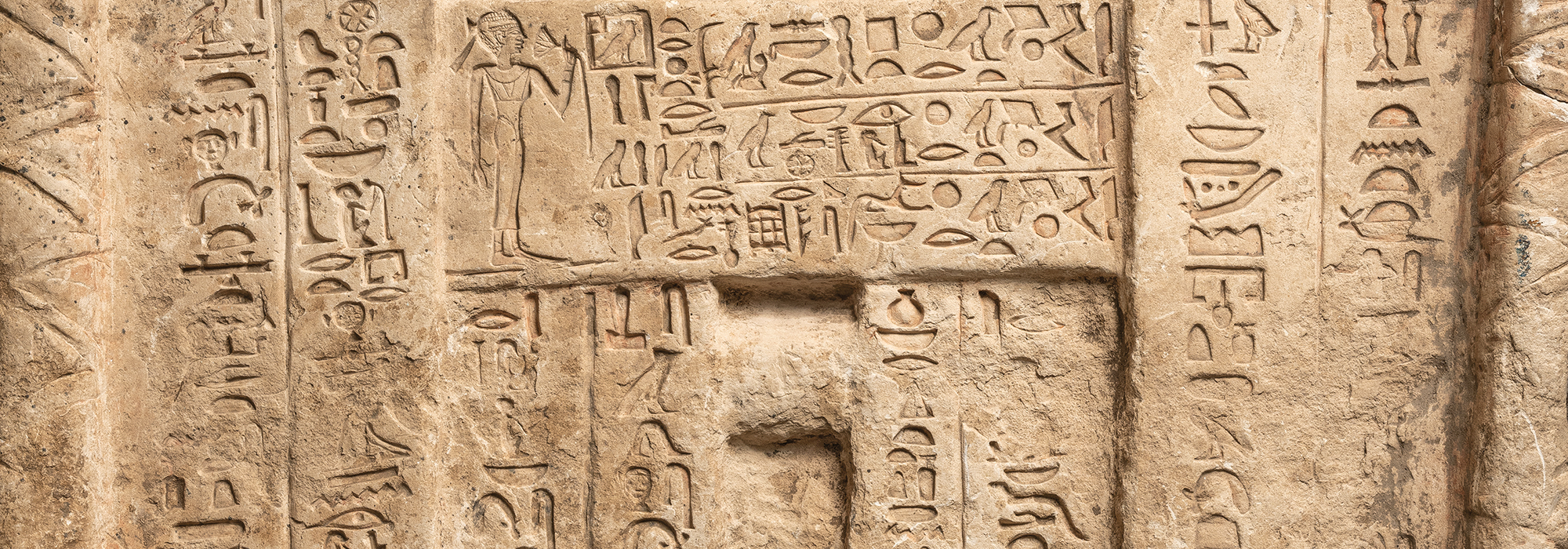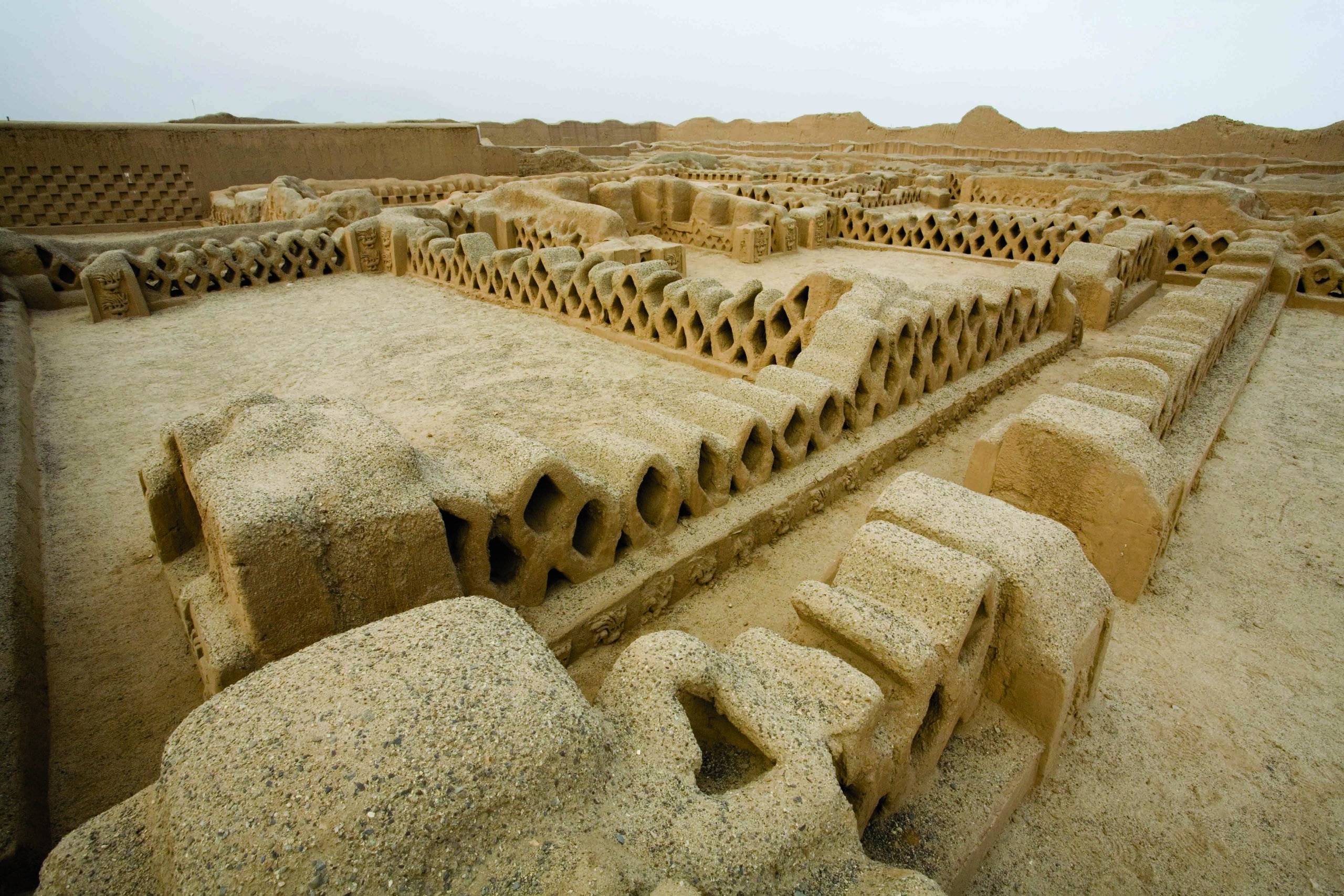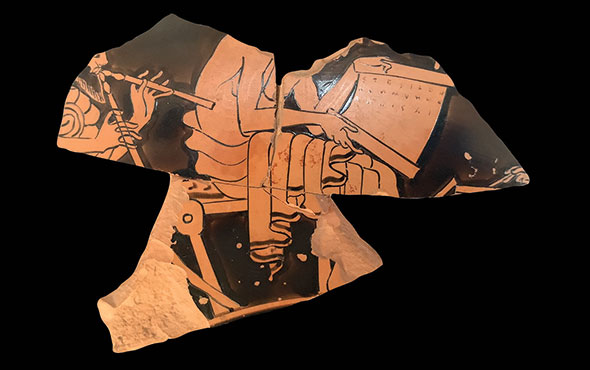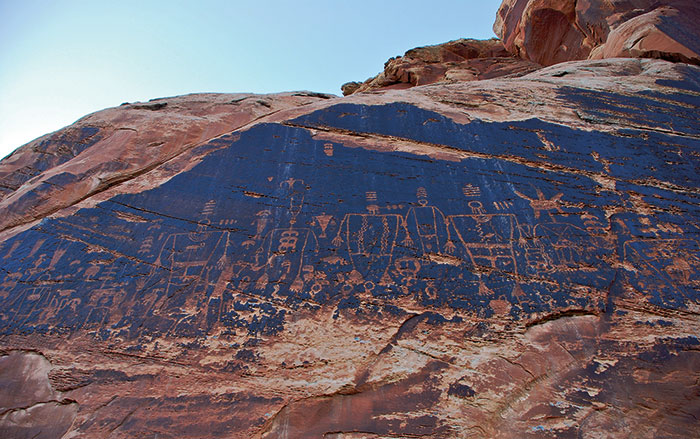
CAIRO, EGYPT—According to a Science Magazine report, X-ray fluorescence has been used to examine 3,000-year-old tomb paintings in Egypt’s Theban necropolis in a project led by Egyptologist Philippe Martinez of Sorbonne University. By measuring how the paintings absorb X-rays, Martinez and his colleagues were able to identify pigments on the surface of the paintings and pigments in earlier layers of paint that are no longer visible. Thus, the technique reveals layer-by-layer changes to the artwork. For example, the study showed that a visible portrait of Ramesses II, who ruled Egypt from 1279 to 1213 B.C., had been painted over a version in which the pharaoh wore a shorter crown and a different necklace, while carrying a different scepter. It had been previously thought that the many tomb paintings in the necropolis had been produced in an assembly line–like process in a planned and precise manner. Now researchers think a master artist may have reviewed the work of apprentices and issued corrections to be made to the images. “What we see is that nothing is perfect,” Martinez said. “And that’s great, because they were human beings.” Read the original scholarly article about this research in PLOS ONE. To read about advanced imaging techniques that are revealing how artists in Roman Egypts created customized mummy portraits, go to "At Face Value."


